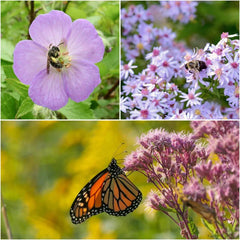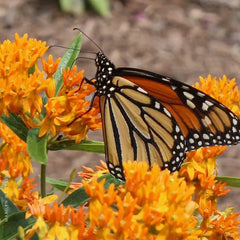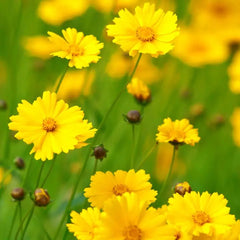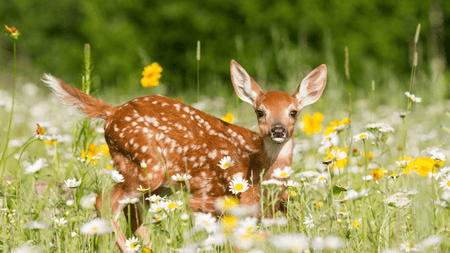How to Plant Your Native Plants

Congrats on your decision to plant with a purpose! When you garden with native plants, you’ll help wildlife and the planet, while also enjoying the beauty of nature just outside your home.
Building your wildlife garden is easy with our Garden for Wildlife™ native plant collections. The plants you’ll receive will help and attract high numbers of wildlife, provide colorful bloom across multiple seasons, and return every year. Every purchase includes tips from our pros to help your garden grow.
Ready to get your hands dirty?
Watch this step-by-step video tutorial with National Wildlife Federation Naturalist David Mizejewski on how to plant your Garden for Wildlife™ native plants:
If you want it in writing, keep reading!
4 Easy Steps to Planting Your Wildlife Garden
Once you’ve decided where you’ll be planting (see tips for that below), remove the plants from the box and follow these steps to get your plants in the ground:
Step #1: PREP
If you’re planting in a container, this is as simple as layering a couple inches of broken clay or small rocks of various sizes at the bottom of the container and then topping with a mix of potting soil with organic compost. Make sure your container has drainage. If you’re planting in the ground or a garden bed, you’ll want to remove any lawn or weeds and break up the soil.
Step #2: PLANT
Dig a hole in the soil slightly wider than and equal in depth to the plant package. Loosen plant plugs from packaging by pushing up from the bottom, being careful to not hold or pull plants by their stems. Cup the root mass in your hand and gently place in the hole.
Step #3: PAT
Pat down the soil around the plant base. Add mulch as needed to help retain moisture, taking care that the mulch does not touch plant stems.
Step #4: POUR
Water thoroughly right away, soaking the plants at their base. Continue to water daily for at least the first two weeks as your plant’s roots become established. If the weather is hot and dry, continue to water regularly. Note: Once your native plants mature and bloom, they will fill out the space and require less mulch to prevent weeds and retain moisture. They will also need less water as native plants offer low-maintenance beauty. Please never use pesticides or herbicides in or near your wildlife garden!
That’s it; you’re now a wildlife gardener! We can’t wait for you to experience the beauty these plants will bring you, along with the joys of seeing wildlife come to visit your garden.
Where to Plant Your Wildlife Garden
If you bought full-sun native plants, you’ll want to choose an area with at least 6 hours of sun per day. Our sets of native plants for shade should be placed somewhere that gets around three to six hours of sun per day.
The 6-plant collections grow to fill a space up to about 4x6 feet. Our 12-plant collections grow to fill a space up to about 8x10 feet. Many of our collections can be planted in patio containers, with a few exceptions for plants that will grow too big (see sizing information on each plant collection product page).
Each of our native plant collections comes with detailed planting instructions and care tips from our pros, along with suggestions for how to arrange the plants in your garden.
Tips for Planting Native Plants in a Garden Bed
When planted in the ground, your plants will spread wider and grow taller, while also helping underground soil systems. When planted densely, native plants can crowd out weeds (another win!).
- In terms of size, we recommend a 4x6 area for our 6-plant collections and an 8x10 foot area for one of our 12-plant collections.
- Remove any lawn, weeds or debris, and break up the soil.
- Use organic compost.
- Once plants are mature and in bloom, they will fill out the space and require less mulch to prevent weeds and retain moisture.
- Add a bird bath or make a puddling dish using a clay saucer to collect rainwater along with some pebbles to create a resting and drinking spot for wildlife.
Tips for Planting in a Container
Many of our plants may be planted in containers; however, it is possible that they will grow large over time and require staking, trimming, or dividing to maintain suitable size. Please note the plant size information included on each collection page and in the planting instructions that come with your plants (not ALL of our plants are suitable for containers).
- For our six-plant collections, you’ll need a minimum 36” round container or 3x4 foot box or raised bed with drainage holes. If using containers, be sure to layer in 2” broken clay pot or small rocks of various sizes for drainage.
- Individual plants can also be planted in their own smaller containers, each at least 12”-24” inches. Add a mix of potting soil with organic compost.
We’d love to see your garden grow!
Share photos of your garden on social media by tagging us @GardenForWildlife or using #GardenForWildlife on Facebook, Instagram, Twitter or TikTok.
--
New here? We currently offer native plants for 36 states in the Northeast, Mid-Atlantic, Southeast, and Midwest and we're working to expand nationwide. Click on your state to browse our curated collections of native plants available for where you live.

Find Native Plants by Zip Code
We took the guesswork out of planting native. Check your zip to see what ships!



















